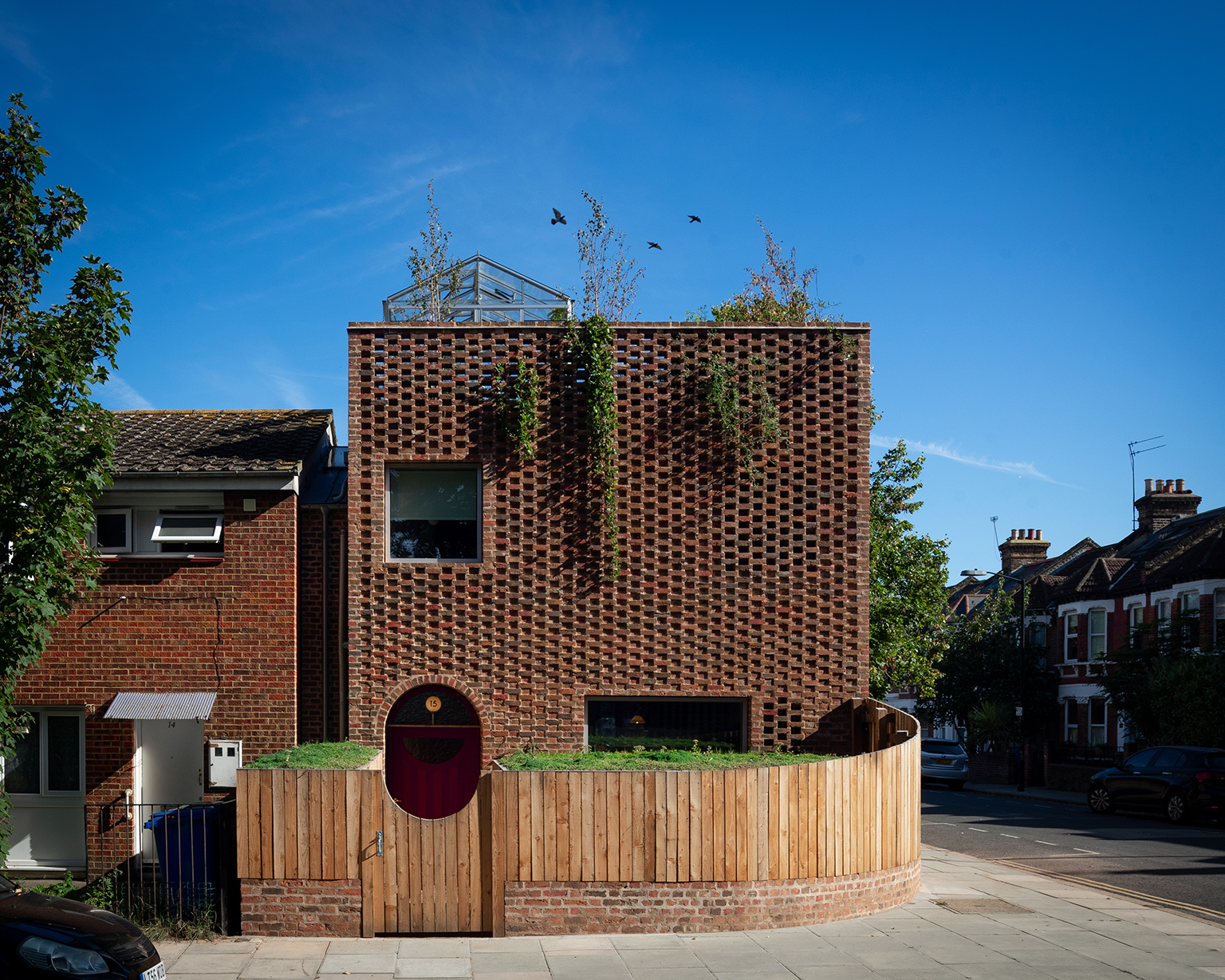
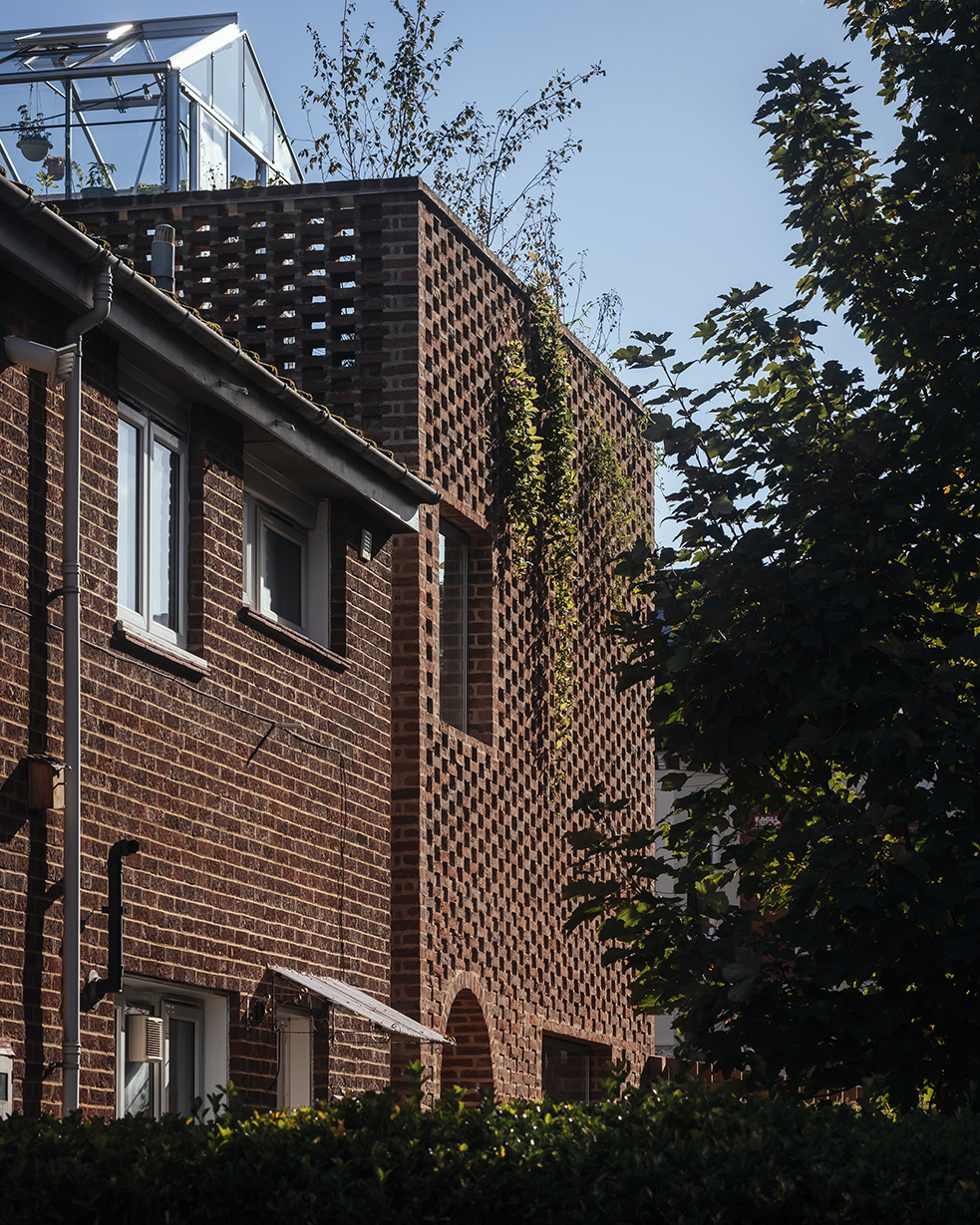
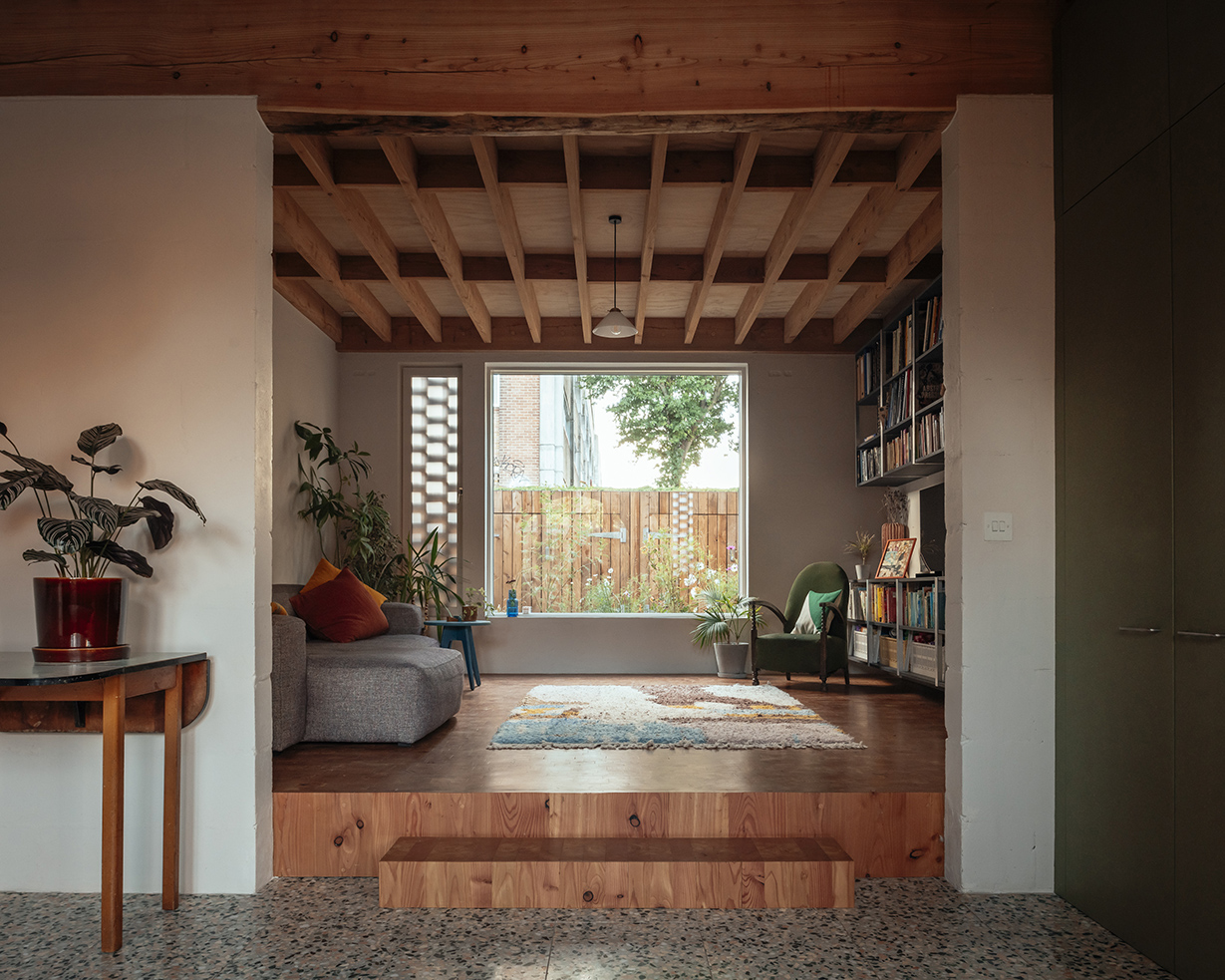
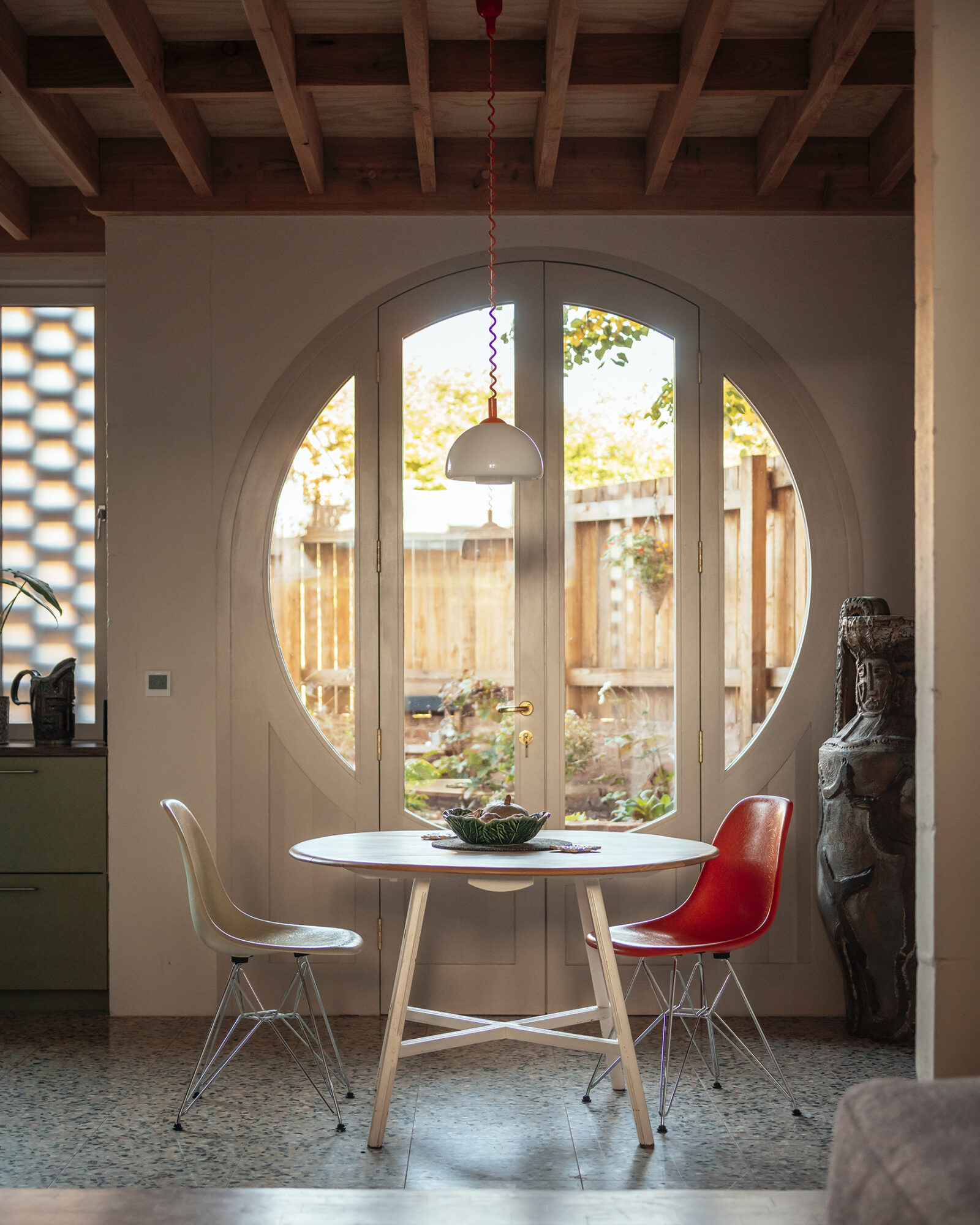
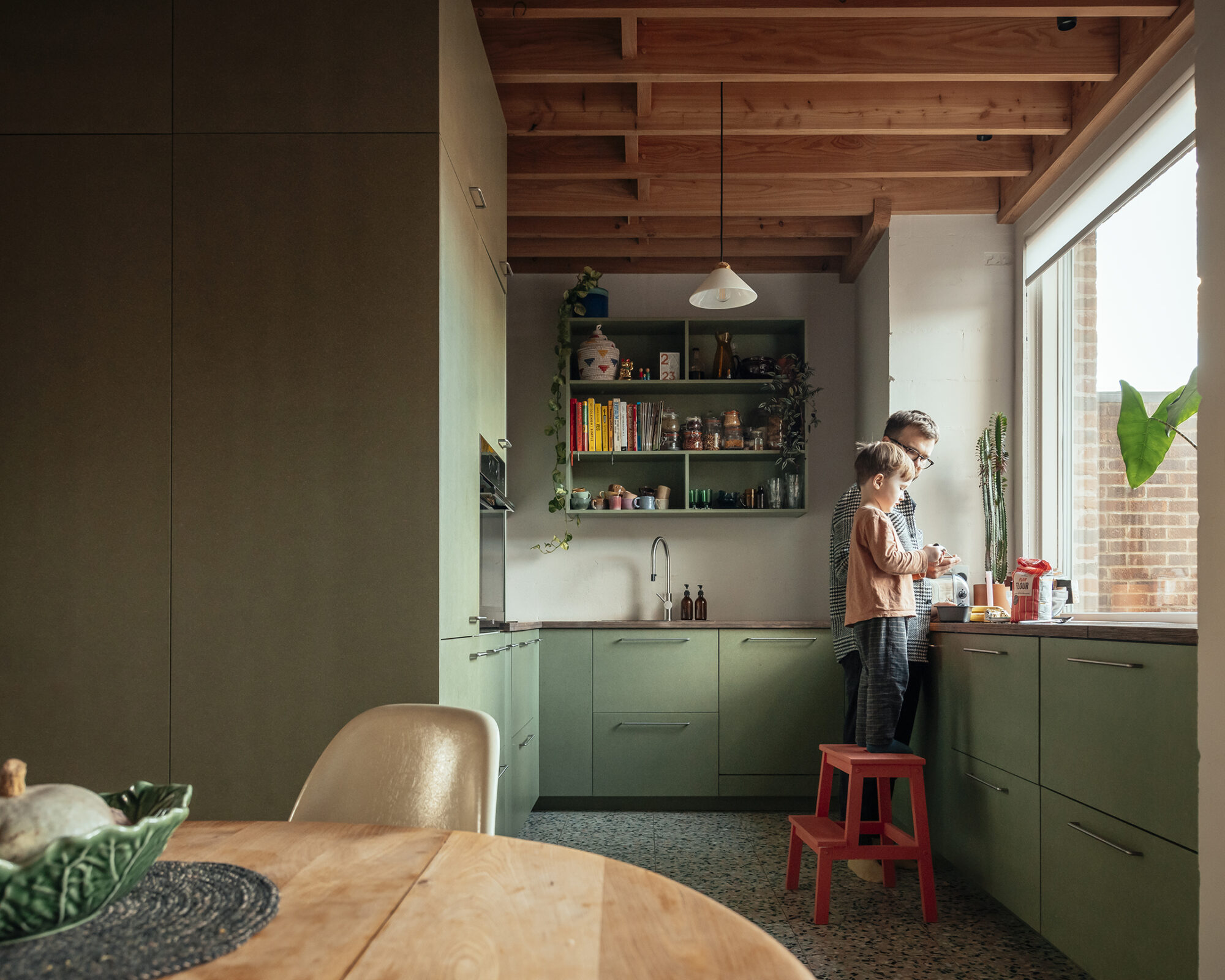
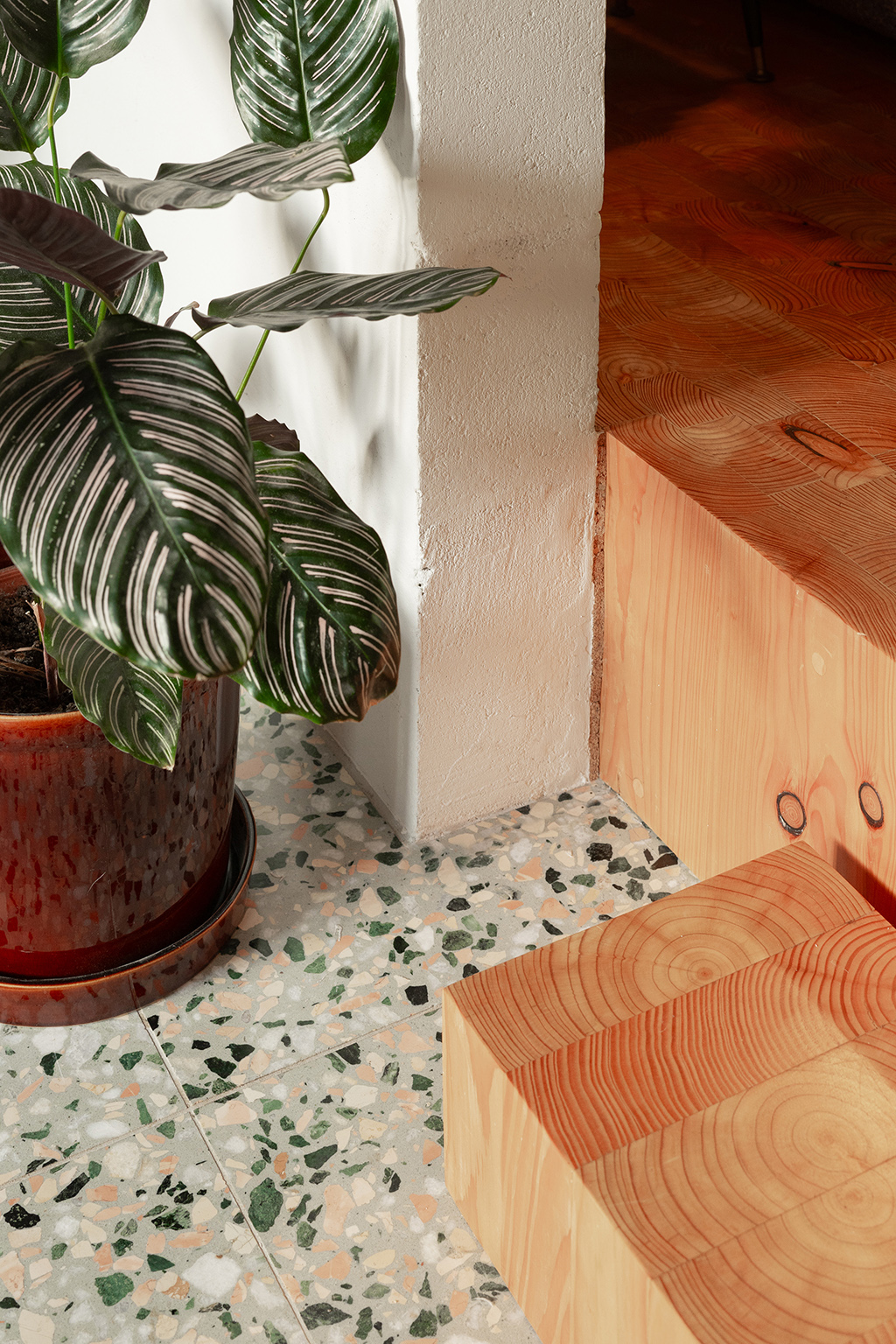
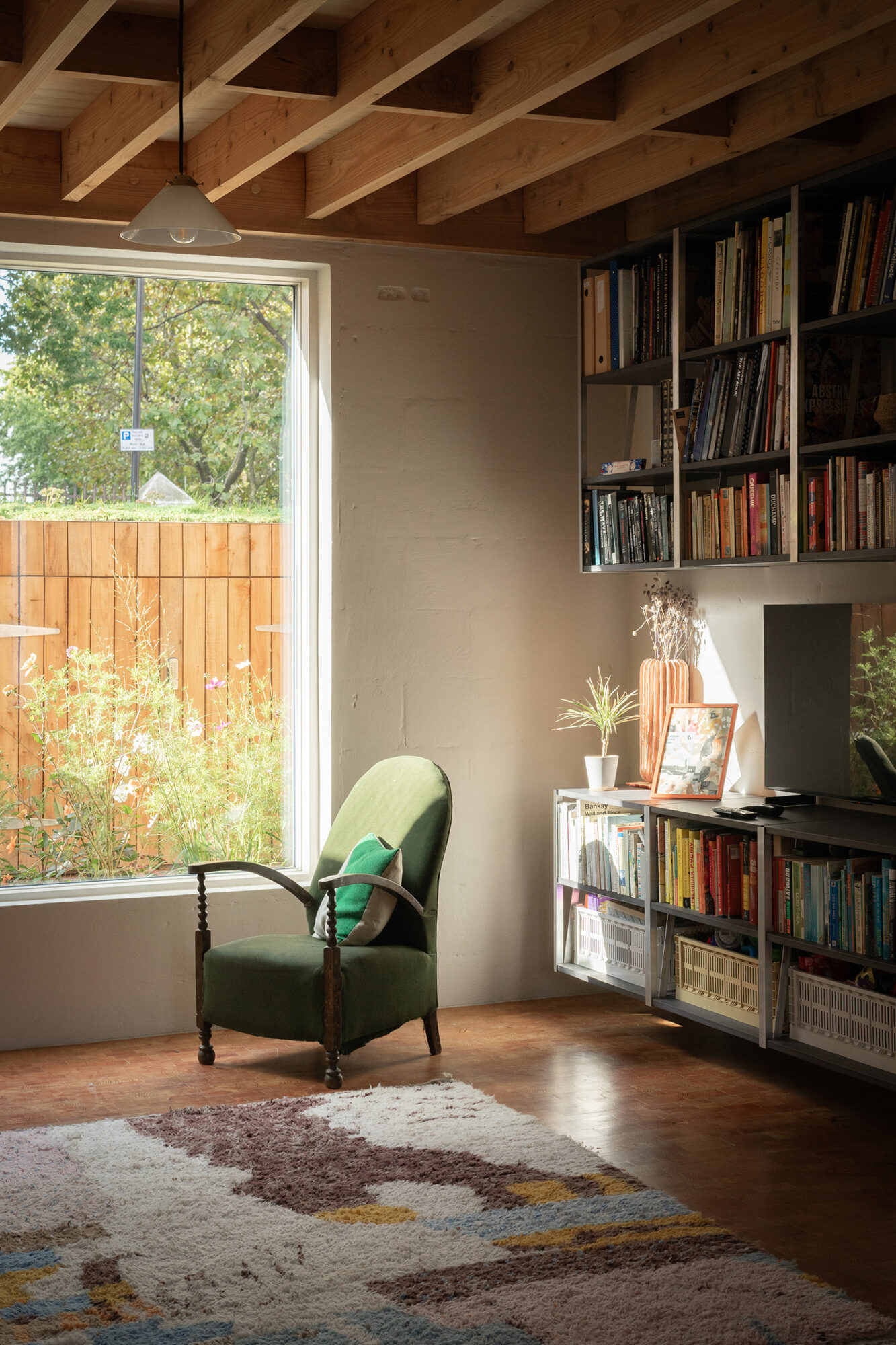
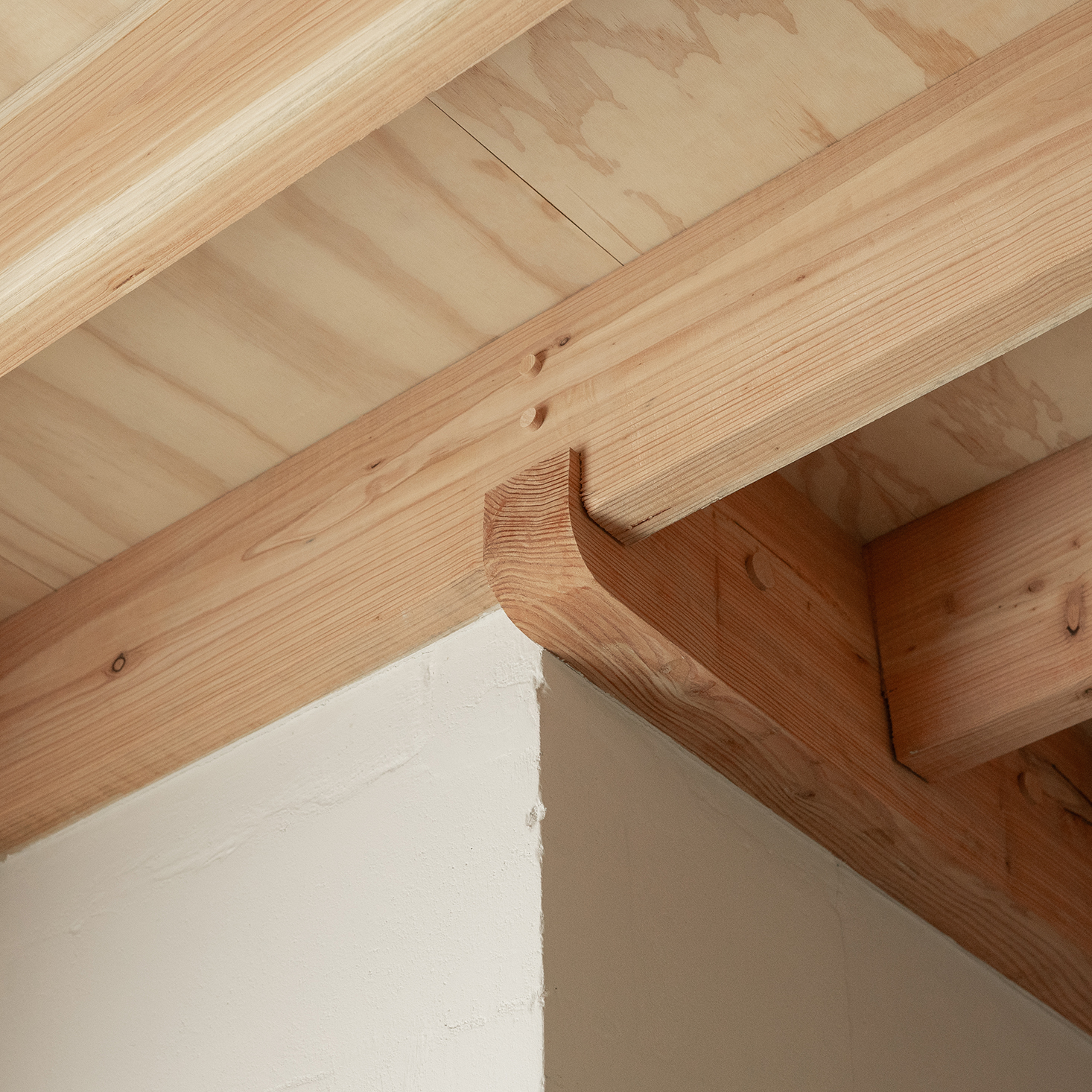
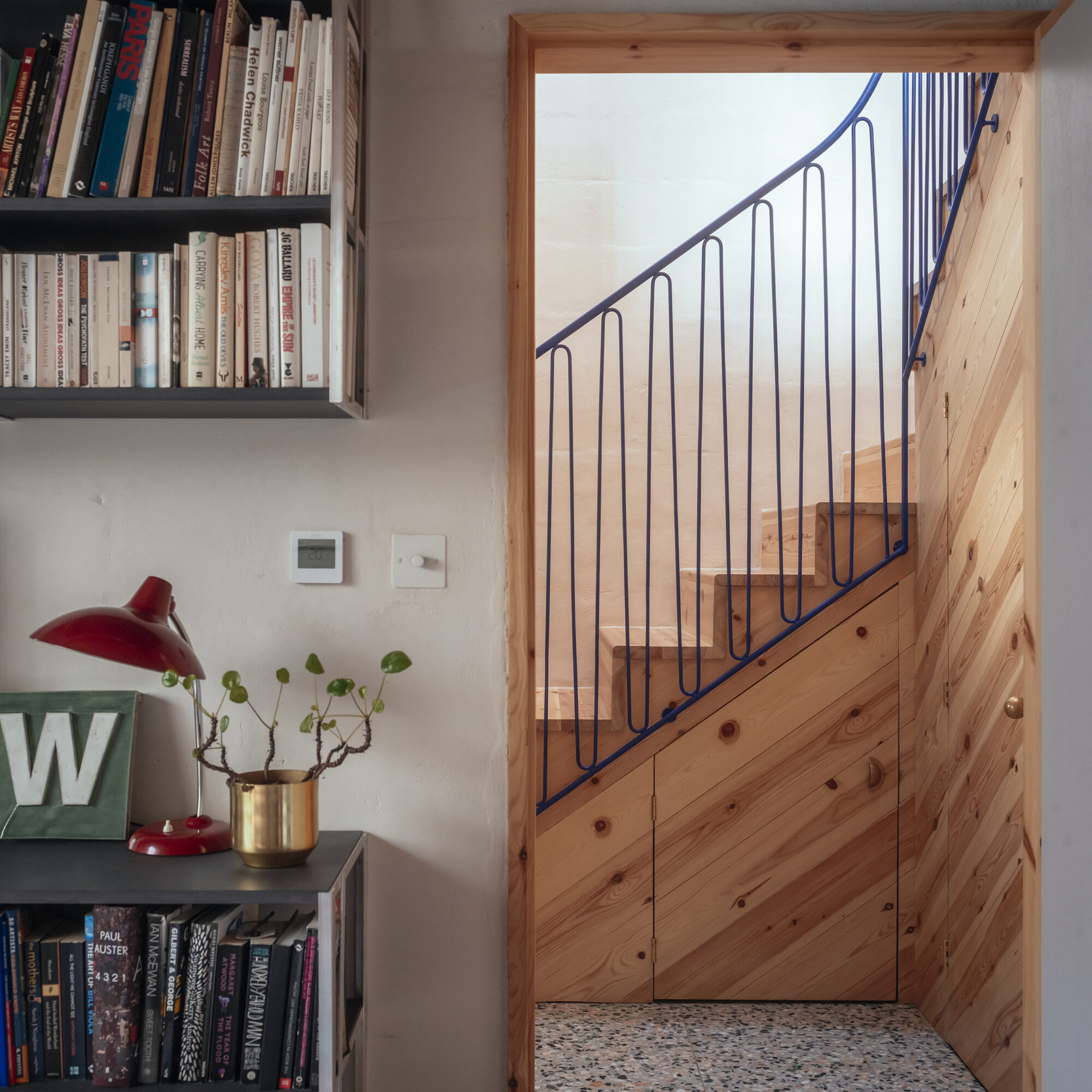
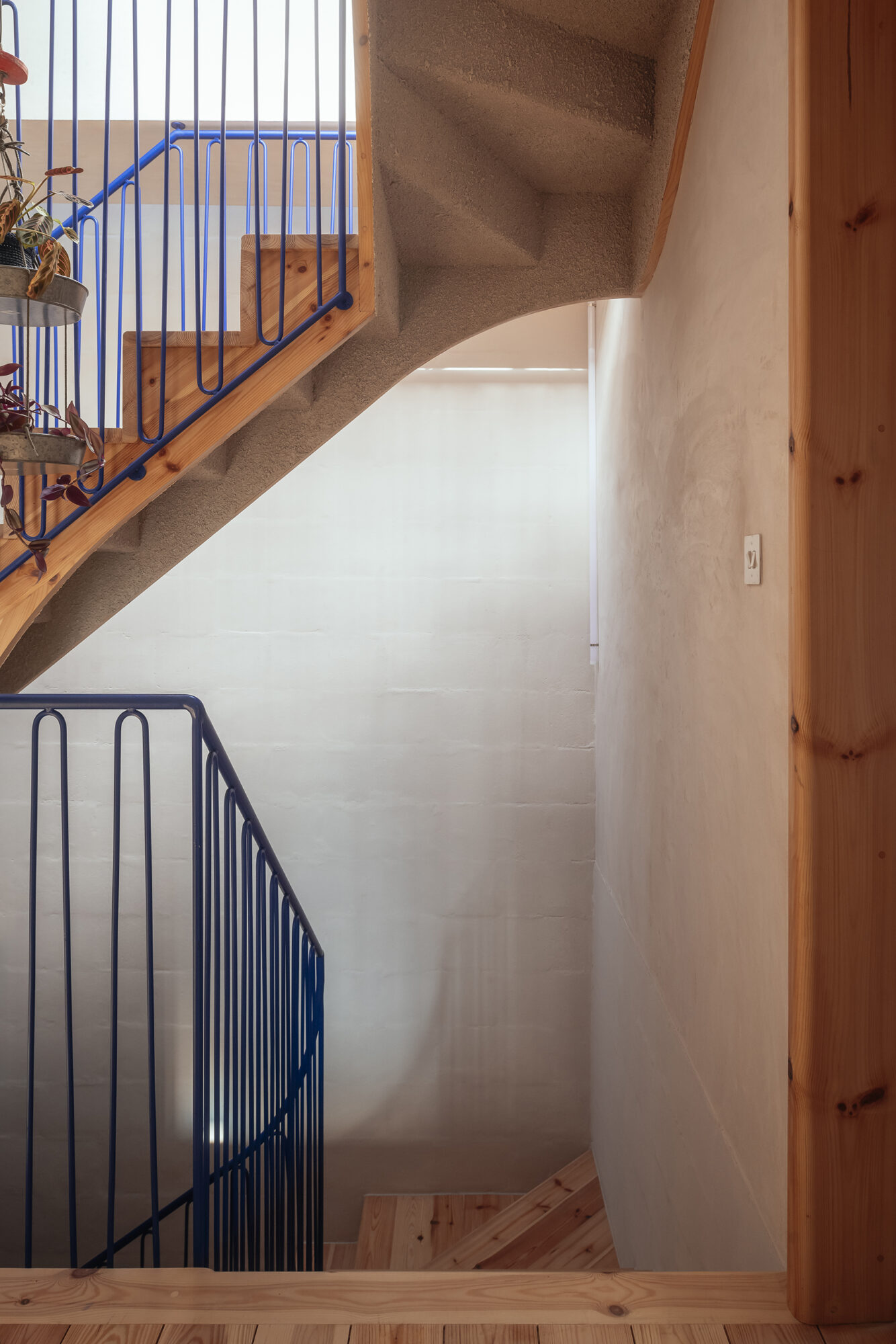
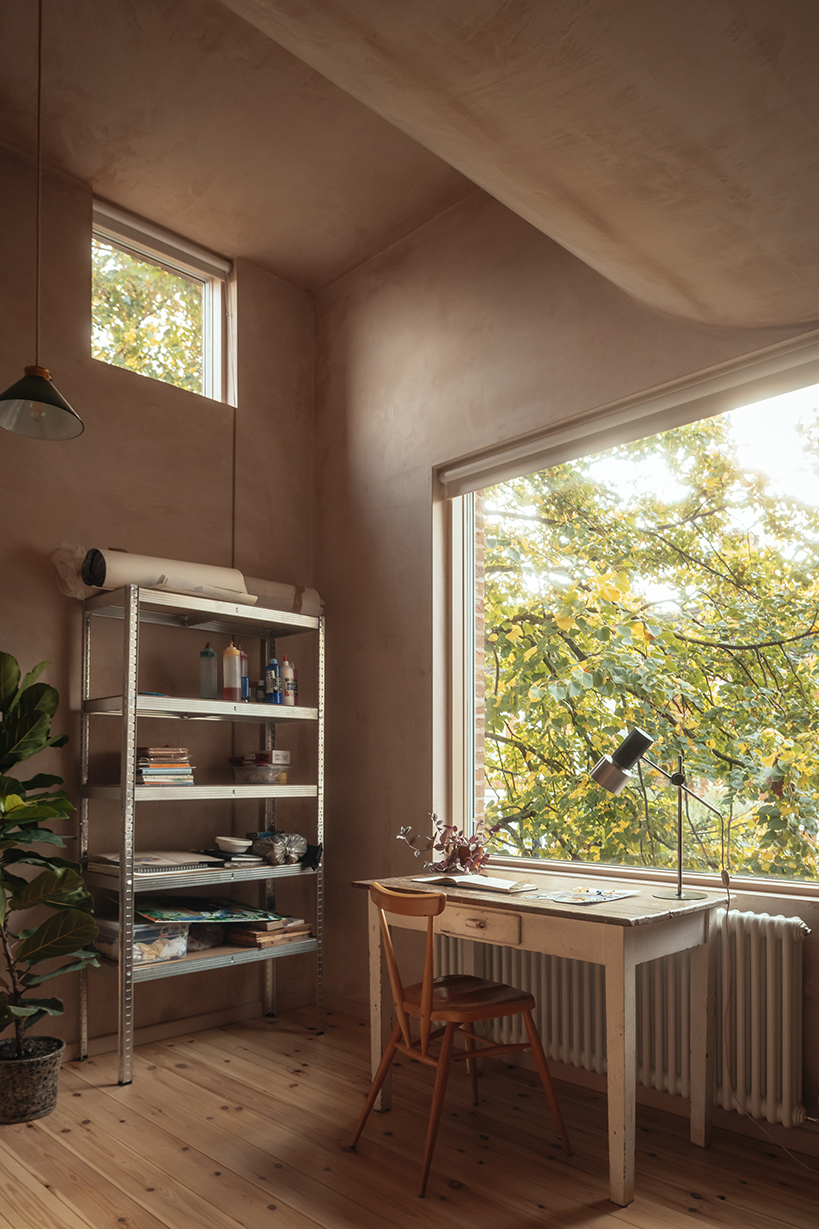
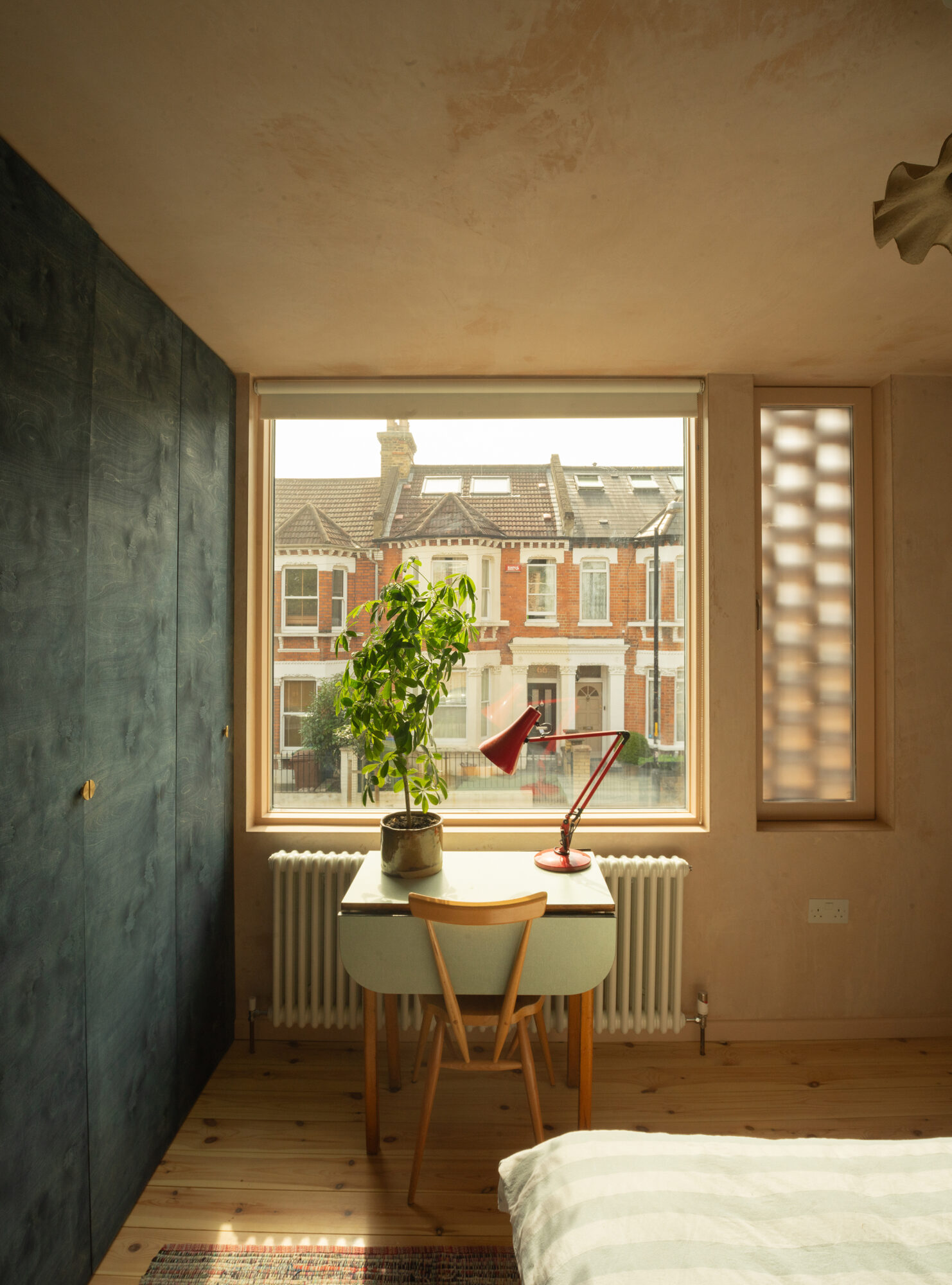
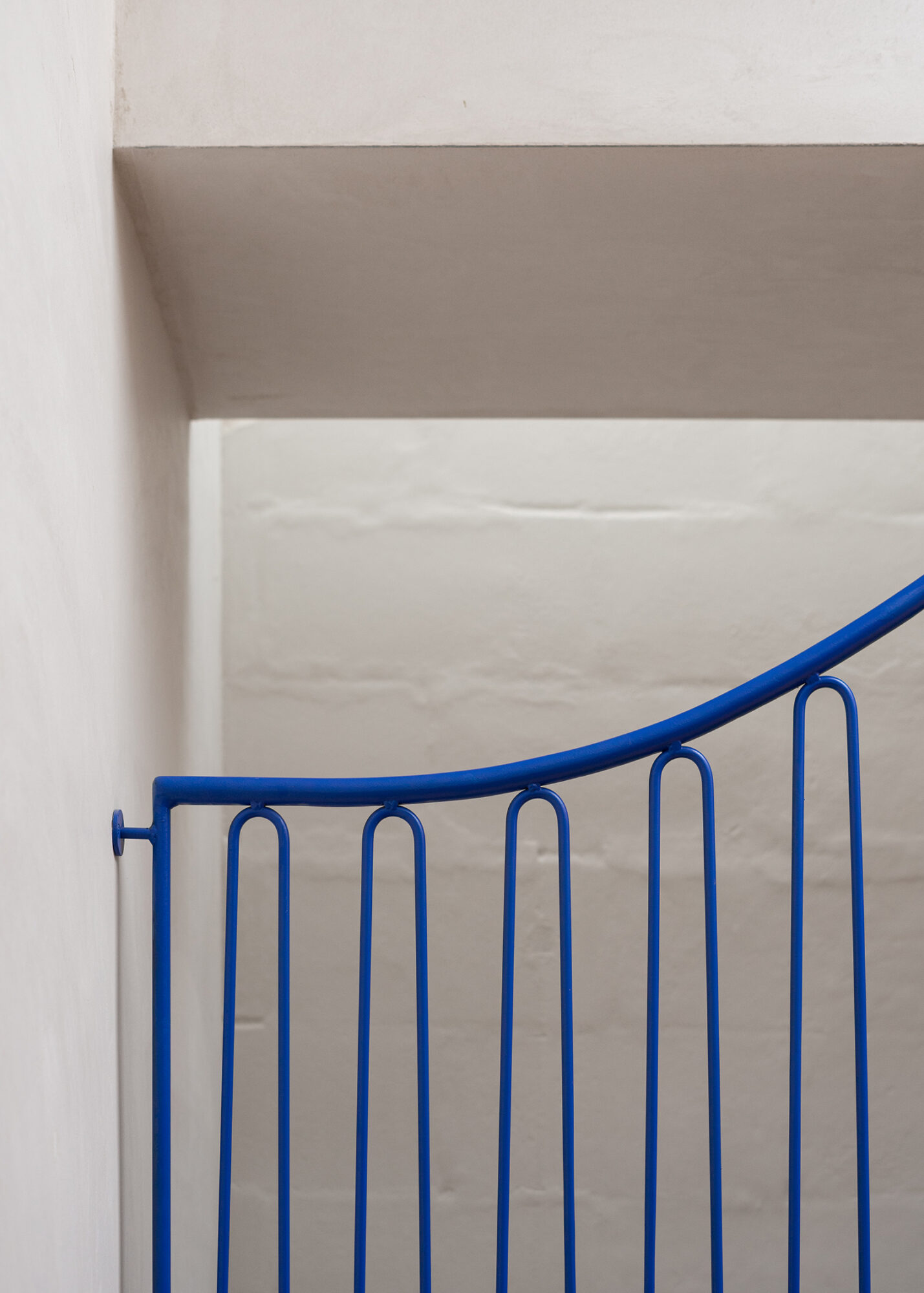
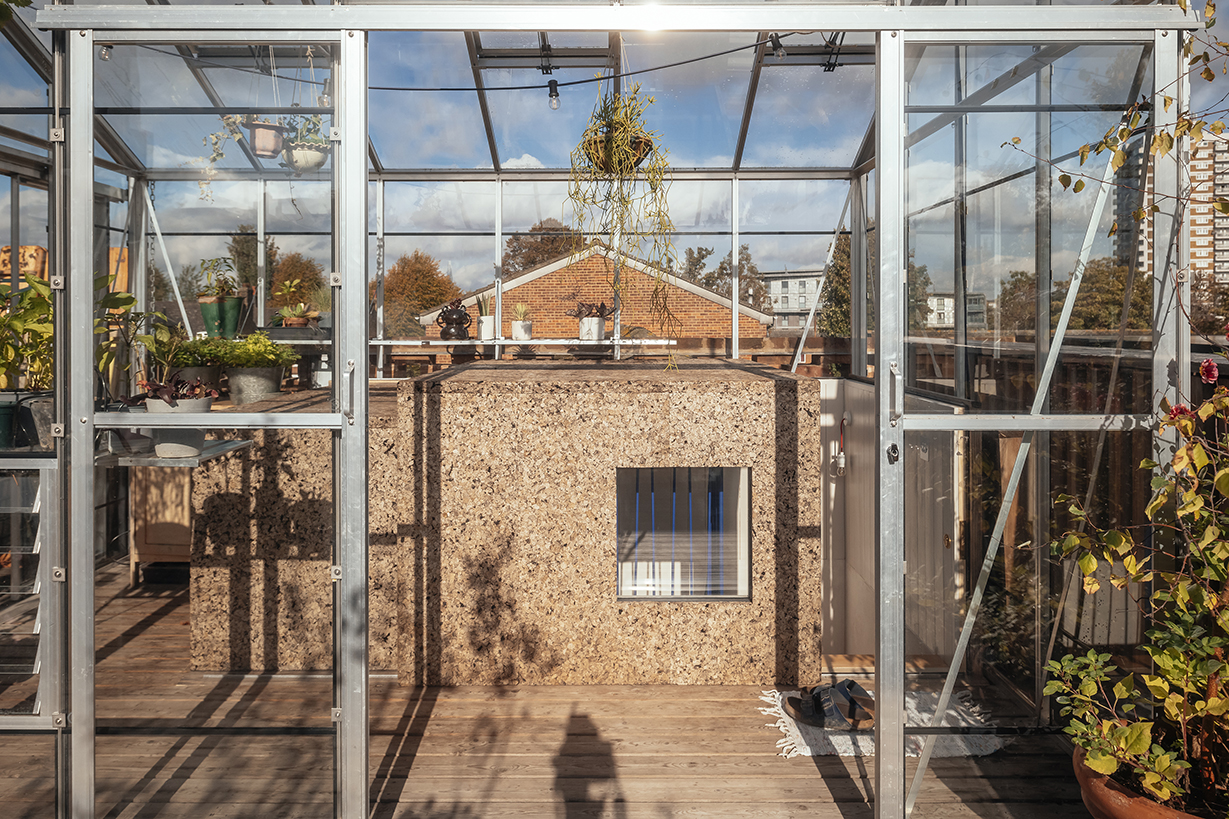
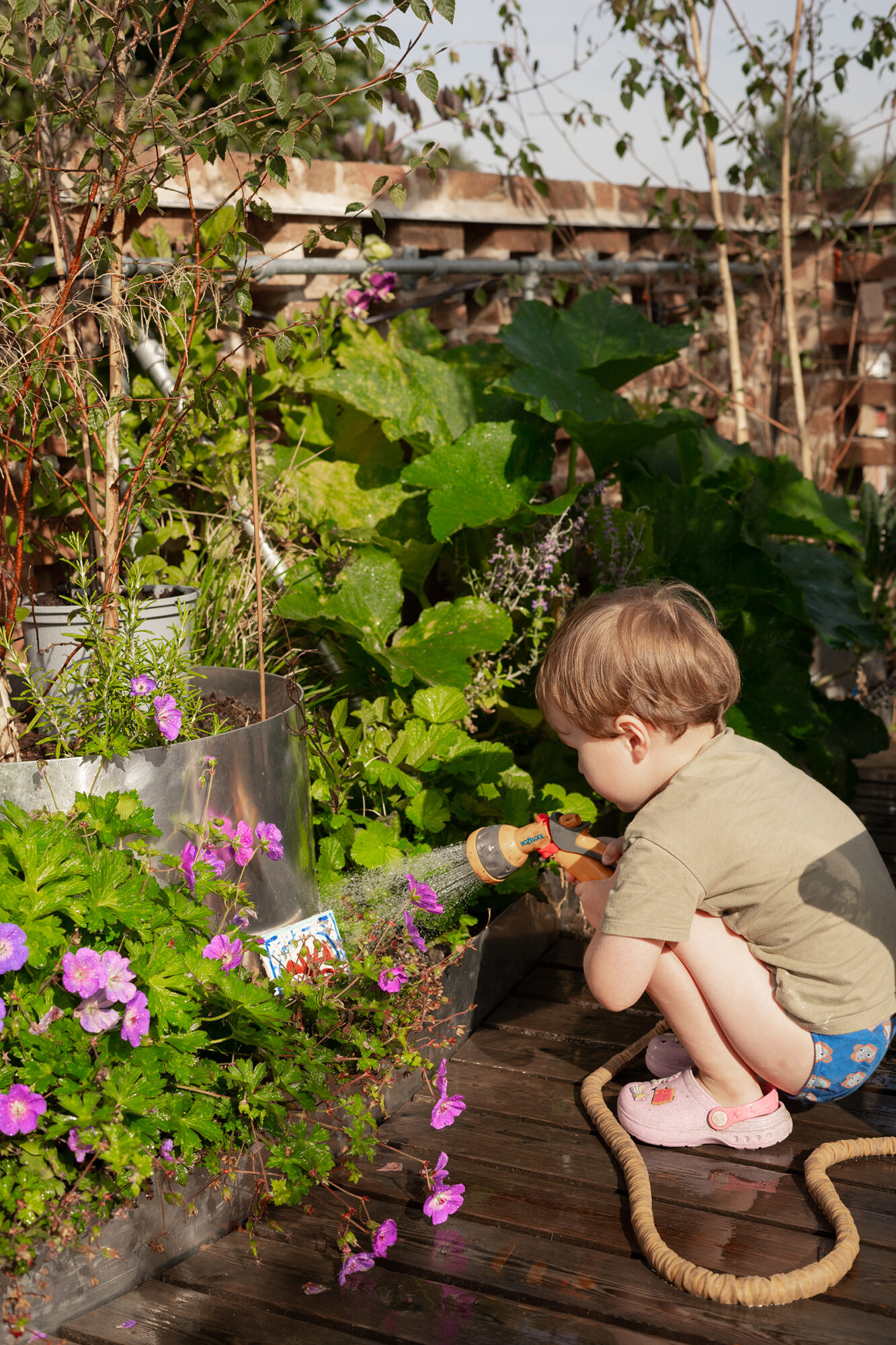
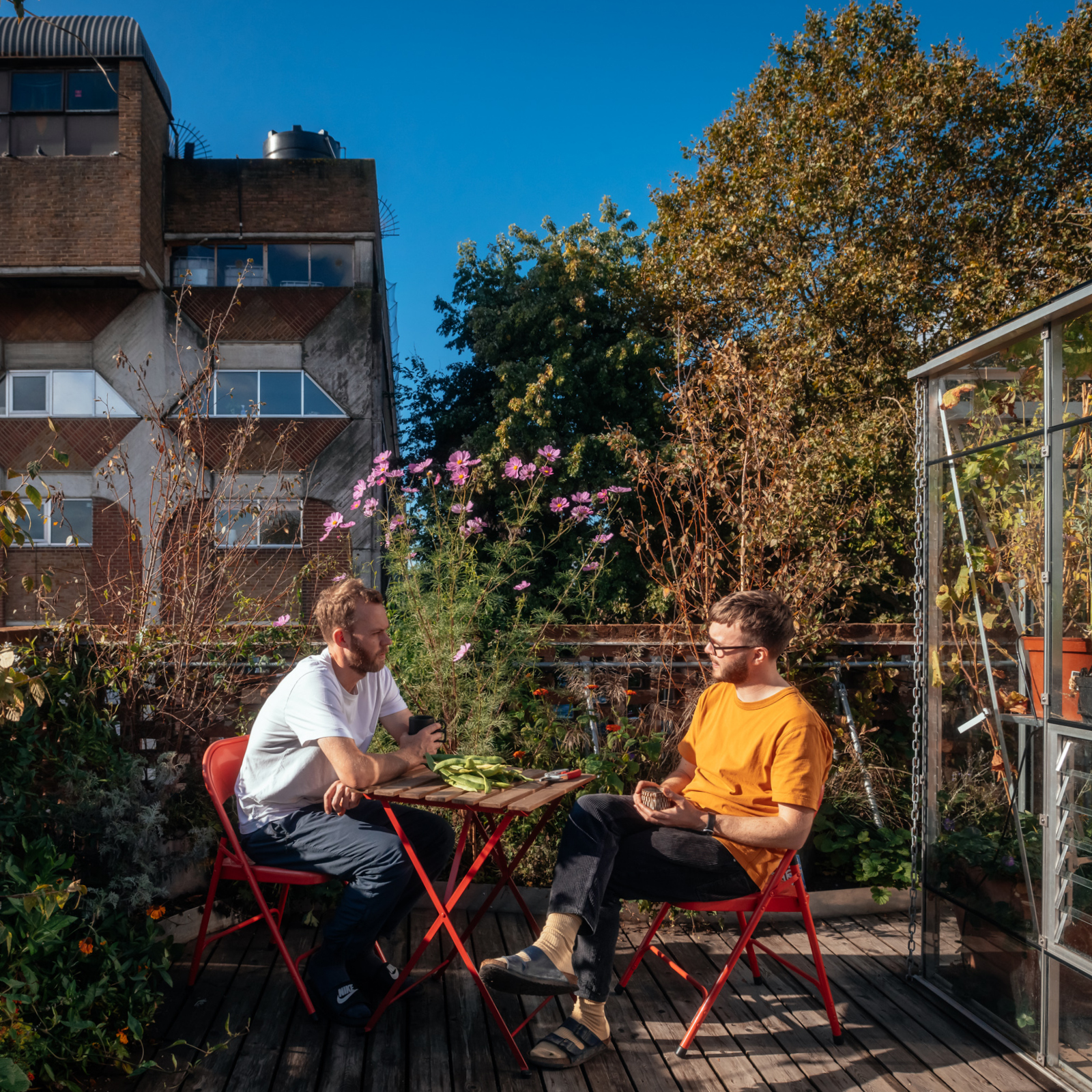
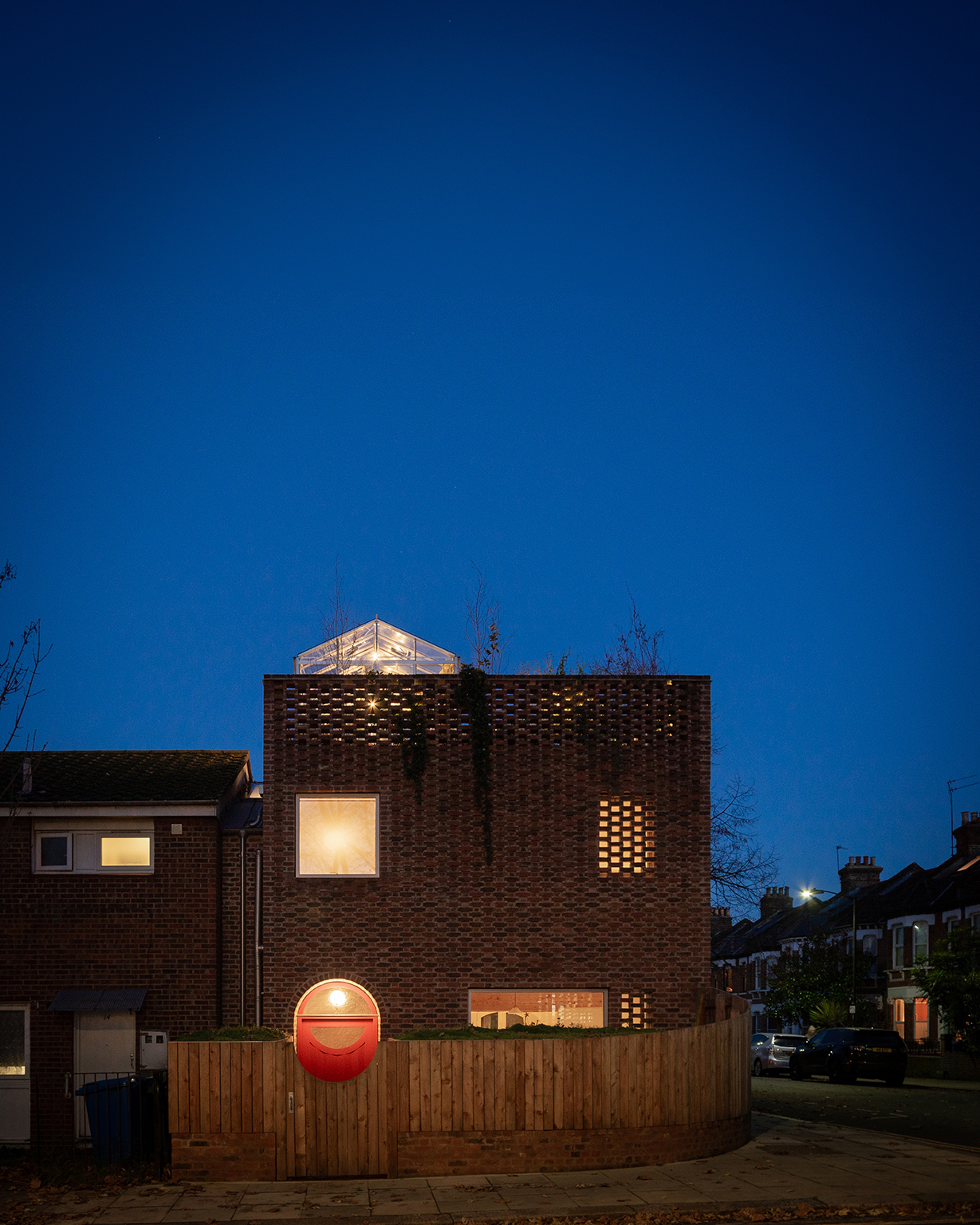
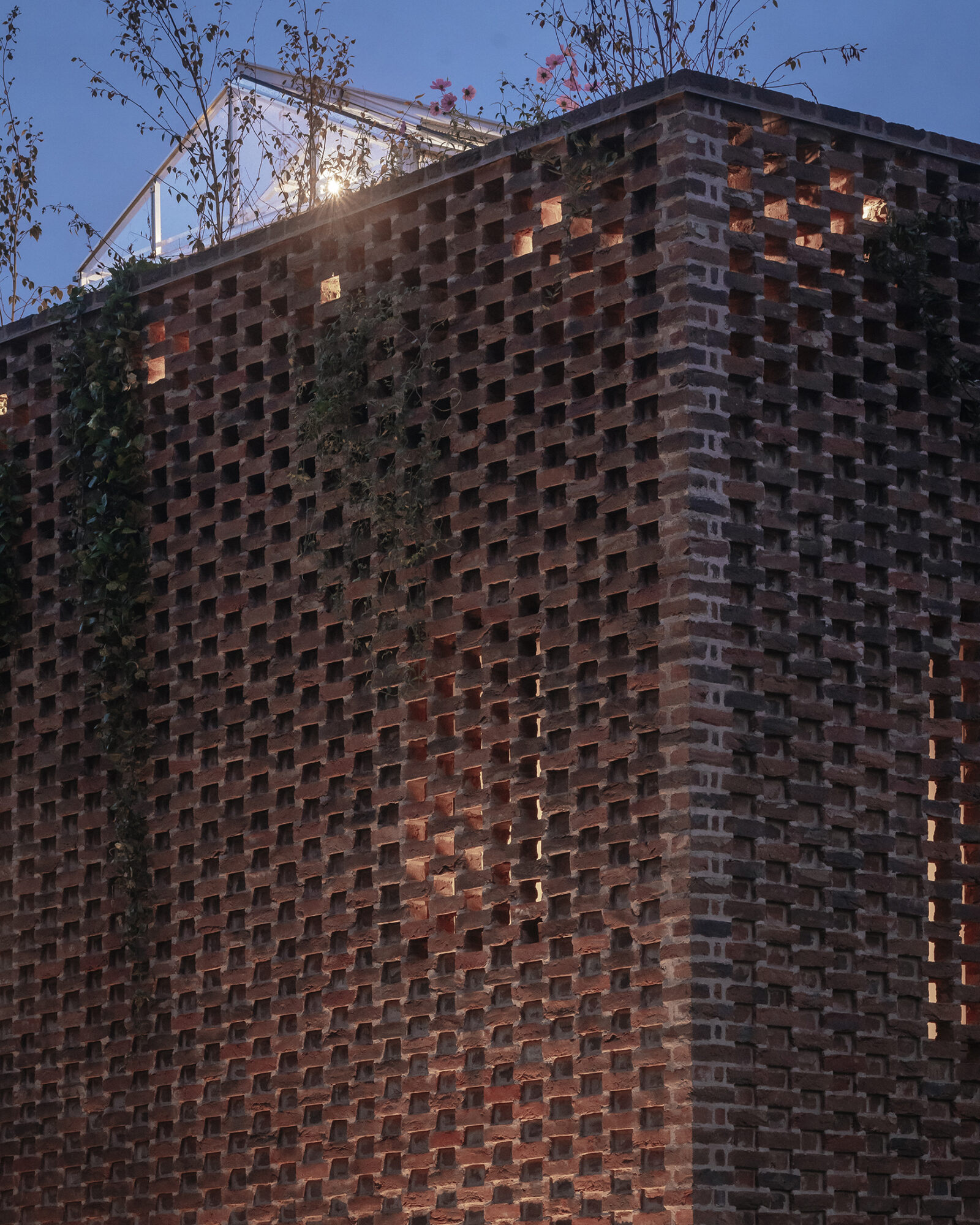
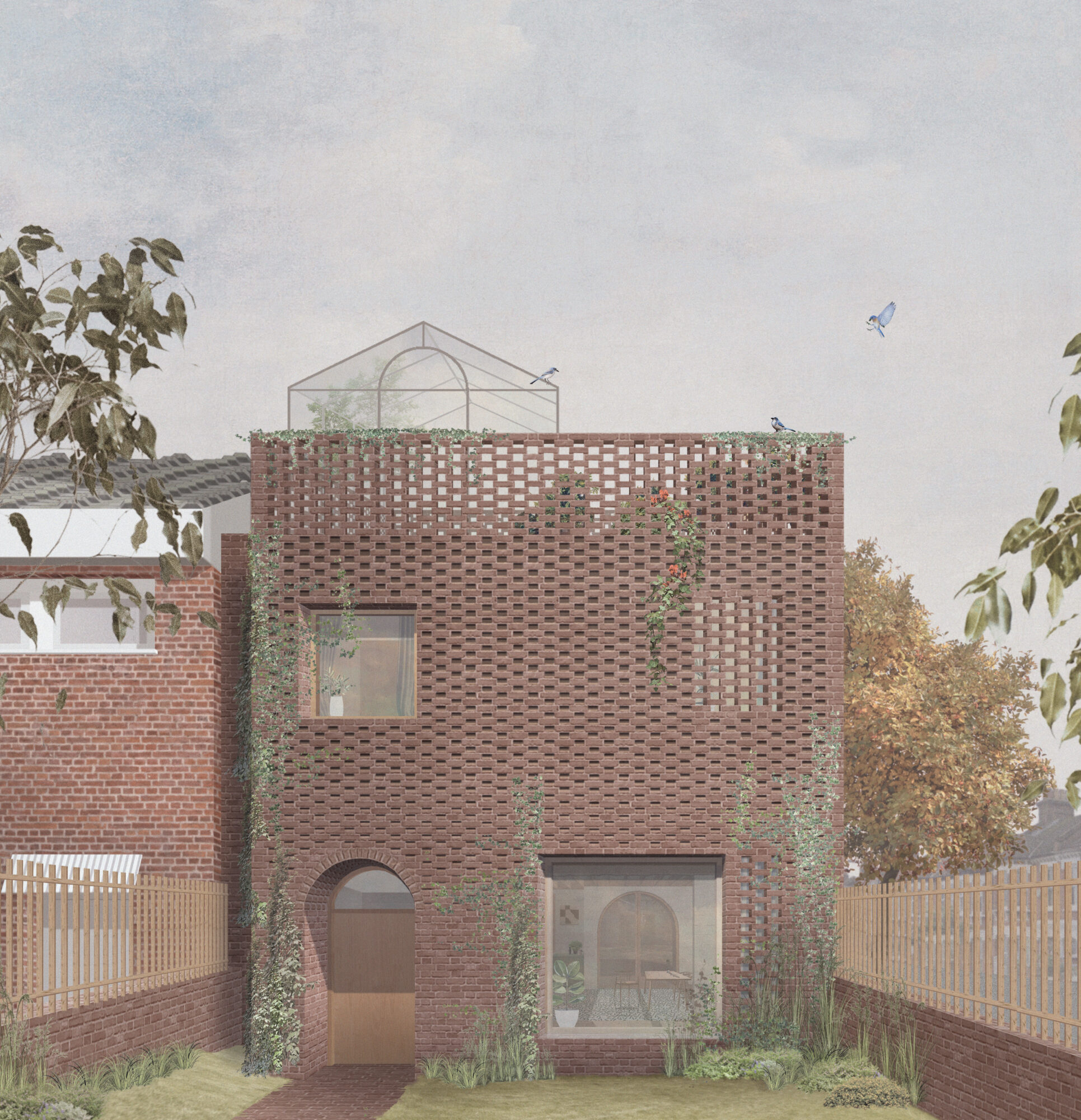
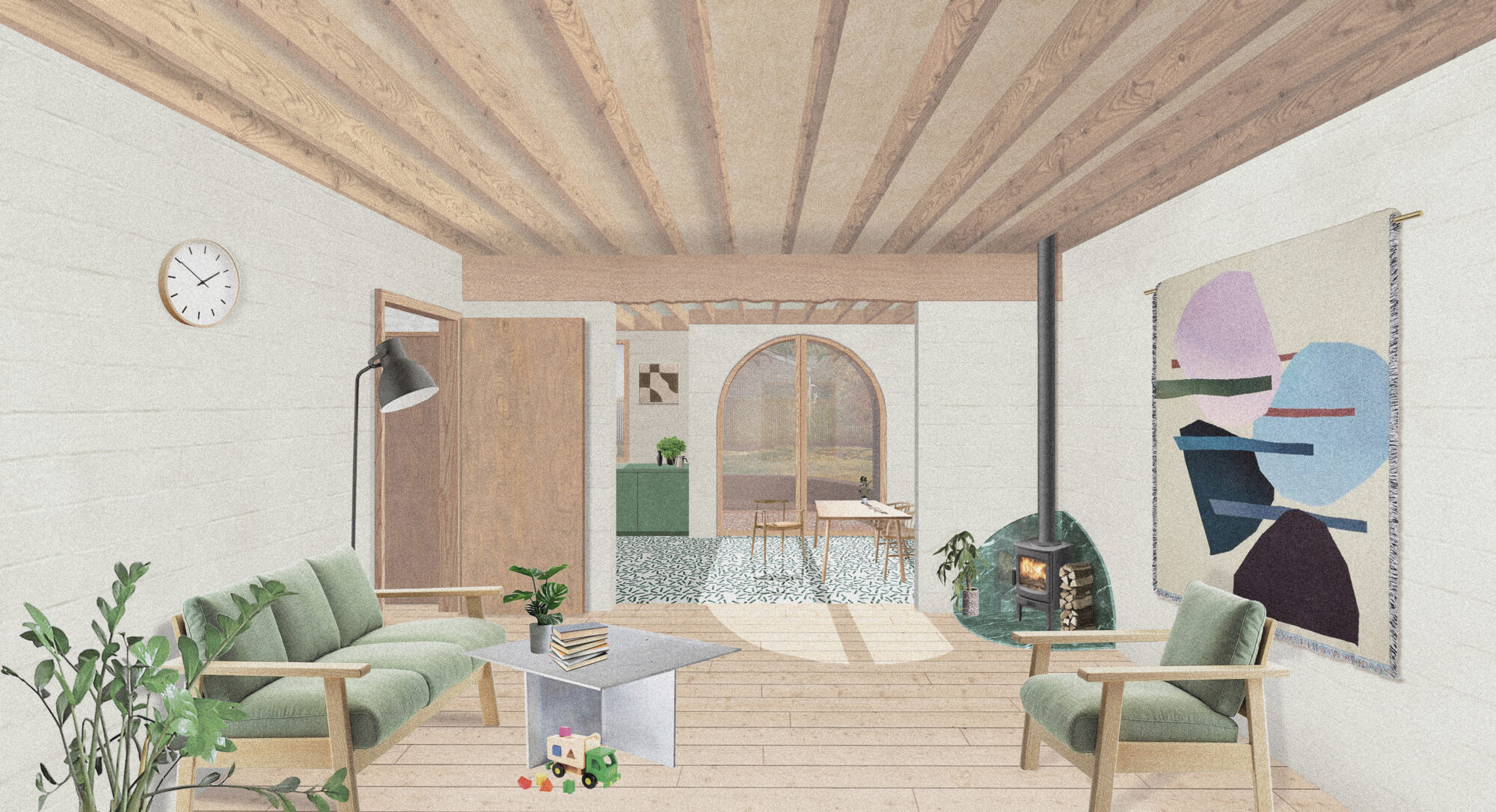
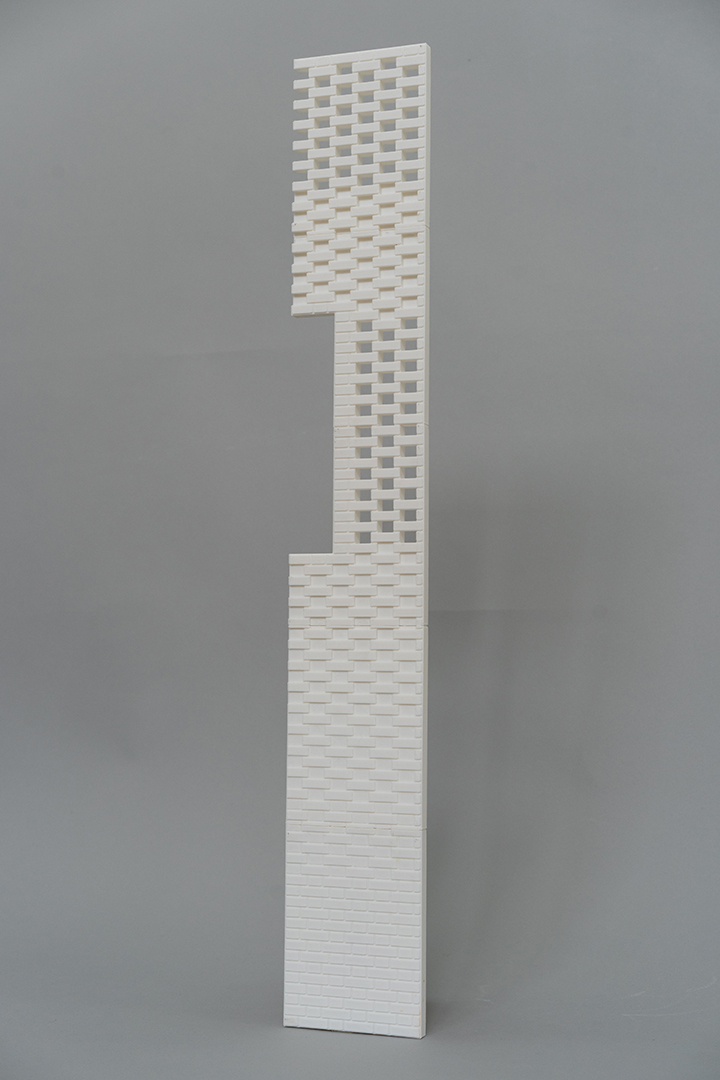
Peckham House
Status: Completed
Completion: 2022
Client: Private
Location: Peckham, London
Project Team: Percy Weston, Tom Surman, Hilton Murrell
Structural Engineer: Structure Workshop
Services Engineer: Peter Deer and Associates
Joinery sub-contractor: Tim Gaudin
Photography: Jim Stephenson and Percy Weston
Planting Design: Lidia D’Agostino
Surman Weston has completed its first self-build project, Peckham House, in south London.
The new house, monolithic in its form and veiled in a distinctive hit-and-miss brickwork, is delicate and crafted, referencing and playfully subverting the motifs in Peckham’s vibrant and eclectic urban neighborhood.
In plan the new house aligns with the existing terrace, creating a generous front and more compact rear garden space, however, its form is a clear departure from the established double-pitched roofline. The house takes the form of a monolithic cuboid with a flat roof, bookending the corner, with the parapet aligned with the adjacent ridgeline of the pitched roof terrace. The flat roof echoes the roof of Peckham Levels and creates a third, more secluded garden in the form of a roof terrace – an elevated and green oasis in which to retreat from the intensity of central Peckham.
The house is designed with a brick façade referencing the load-bearing handmade stock bricks of the Victorian terrace and the machined brick infill panels of the car park. Bricks are arranged in a hit-and-miss system to attenuate what would otherwise appear as a monolithic form. As you ascend the house, the header bricks in the Flemish bond brickwork are gradually set back further and further, forming a gradient of shadow. Greater gaps at the roof terrace level reveal multi-stem birch trees and twining climbing plants, a glimpse of the oasis at the top of the ascent. The uniformity of the exterior is softened with self-supporting arched openings to the front and rear, a nod to the nearby railway line and the arched detailing on the former car park.
Openings and entrances are carefully placed to ensure an engagement with the street from the inside out, whilst offering privacy and a sense of enclosure. Inside, the layout follows the blueprint of the enfilade of rooms in a traditional terraced house, with a widened hallway and the introduction of rooflights to bring daylight into the centre of the plan. Materials and subtle level changes help to delineate the spaces: terrazzo for the entrance and kitchen; English larch end grain floor for the reception spaces; lime slurry on the walls of the ground floor; Tyrolean flicked lime lining on the underside of the stairs; and a warmer pink gypsum plaster for the more private bedrooms. Many of the materials are recycled and there has been a consciousness to limit material waste; from the blockwork walls which are made from recycled construction waste, to the end grain wood block floor, which is assembled from the waste off-cuts of the exposed ceiling joists, to the brick off-cuts which were recycled as pavers in the garden.
Design choices have been guided by a steadfast ambition to reduce embodied carbon and operational energy. Materials have been sourced locally from the UK. The house is super-insulated with triple glazing and an airtight envelope with mechanical ventilation heat recovery (MVHR), with onsite energy generation in the form of photovoltaics paired with an air source heat pump. Performance data collected to date exceeds LETI’s ambitious targets for energy use and is 80% better than Building Regulation requirements.
Inspired by the traditional Victorian terrace, the interior comprises simple, robust materials which will age gracefully, such as pine timber floorboards, which can be painted, sanded or carpeted over. Construction is legible and celebrated throughout: from the exposed bespoke stair treads made of CNC-routered pine planks to the structural timber spine wall beam, which retains the bark of the tree it was originally sawn from. Both directors have been very hands-on in the build, fabricating the timber roof structure, exposed ceiling joists, and larch floor by hand, as well as installing the windows, MVHR system and solar panels. The story of the build and the properties of the materials add texture to the house, giving it character and instilling a sense of homeliness.
The roof terrace is entered through a greenhouse via a hatch clad in insulating fcork blocks, a sheltered space which offers a multitude of uses – functioning as a hothouse, winter garden, potting shed, and dining space. It opens out to a roof terrace surrounded by deep flower beds and a sedum green roof, both of which will enhance biodiversity, creating a lush, elevated garden oasis, a haven to retreat from Peckham’s gritty urban environment.